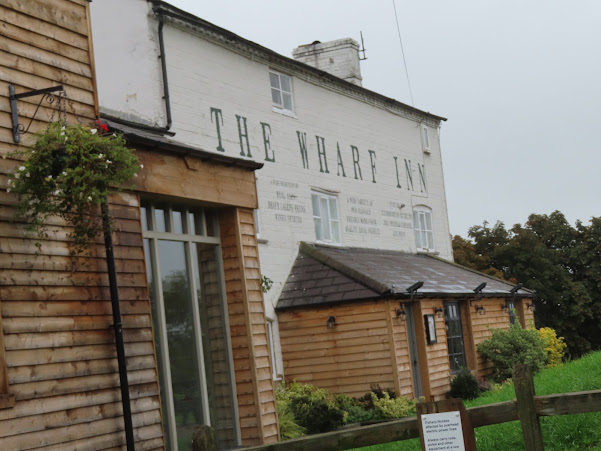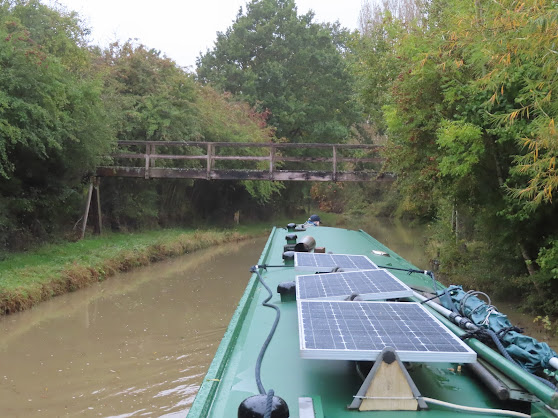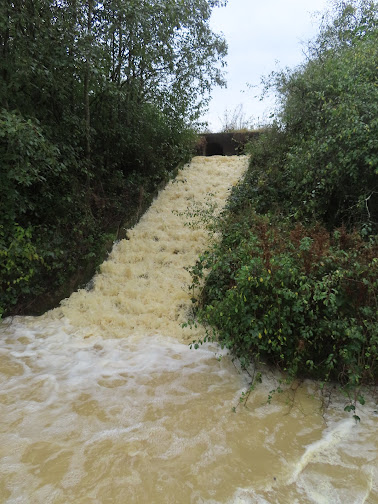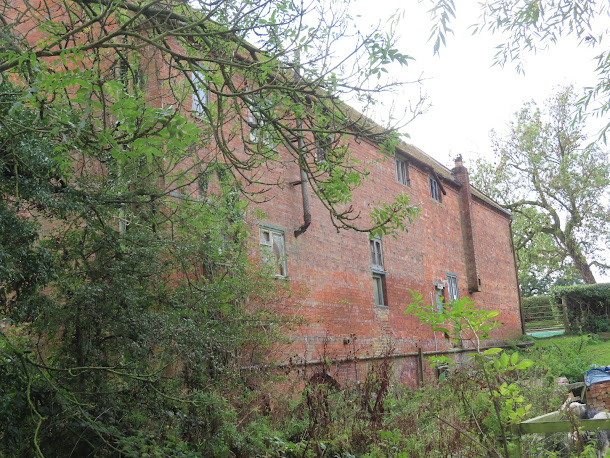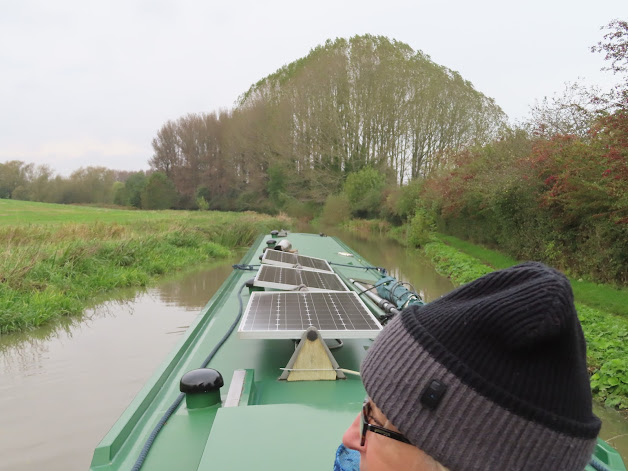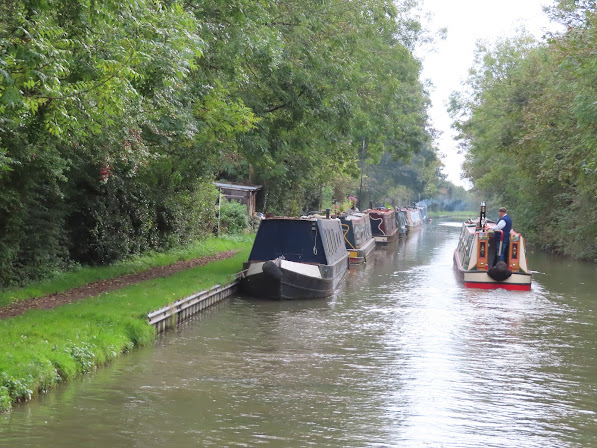We awoke to a sunny day. Last night we hoped that we may see the meteor shower on the way back from the folly but it was mainly cloudy but also the lights of the surrounding towns were extremely bright under the clouds. Several boats passed us both ways, mainly hire boats as it is half term down this neck of the month, but not until next week at home.
After Bridge 112 there are signs of industry next to the canal, remains of old brick buildings and low to the water wharf level bricks etc.
Napton Brick Works, 1885
This was the Napton Brick and Tile Works. It was said to have been started in 1878 by the son of a local builder who thought they could make their own bricks. This was Charles Watson who knew nothing about the process so went into partnership with Thomas Mason who was an established brickmaker from Leamington. By 1897 that partnership was dissolved as Mason was over 80 and Charles may well have learned sufficient to carry on alone. Just afterwards Watson modernised the business and nearly doubled the output to 75,00 bricks per week. His bricks were in demand for the building of railway as millions had been provided to the LNWR for the building of Rugby Station etc in 1884, The Daventry and Leamington Line in 1893 and the Great Central Railway too. In 1899 there was a great fire at the works where sheds and buildings as well as a new kiln were lost. It may have been this that prompted Watson to join with the Nelson Cement Co. in 1902. In 1934 the business became part of the Allied Brick and Tile Limited that seemed to be buying up smaller sites after the depression and I think Charles Watson had died by then. The business survived until 1970 and is now a business estate.
You can see a wharf area here and the warehouse shed walls behind still today.
Brick Works 1923.
In both map extracts you can see that there was a tramway from clay pit at the base of the Napton Hill where they digging the clay. It was said that the clay laid 140 ft deep, and in different bands that gave different colour and quality bricks, including engineering bricks. By the end there were several chimneys on site only one shows on this extract.
At the end of the area of the brickworks was this. It looks like a roll on/roll off ramp, but must have been of later origin. I wonder if anybody knows what it was used for and when?
At Bridge 111, where the main road crosses the canal, I remember the first time we passed this way as we moored close by. It was perhaps 2013. This building was an old derelict pub. It seems that it had originally being called the New Inn, dating from at least 1845. It seems that in the years just after WWII the pub changed its name to the Bridge Inn. I have a memory that it was painted dark on the outside then. It is good to see that it has been bought and is cared for now.
We were then soon at the Napton Junction turn and heading down the Grand Union back to base.
We got to the Calcutt top lock and a pair, not even in the middle lock had been an readied the lock for themselves. It gave us chance to see if anybody was going to happen along and join us going down. They didn't! We then met boats coming up at each of the next locks too. It was very busy for a short time.
This is the Calcutt bottom Lock, and probably the last of the year. You never know we may get a trip out before Christmas, although I haven't checked to see if these are winter stoppages.
I managed to sail past the Sunrise Basin at Ventnor Marina as I had it in me that it was the second entrance for our new berth. A quick back pedal and in through the entrance and heading for the fuel berth. We filled up with fuel, 97.5 litres to Oxford and Back at £110/ litre (moorers price).
We backed down to our berth and as the boat on the same pier was out I managed to get a good photo. About an hour later they arrived so I was glad I didn't wait.
We had planned to go home the following day, but by the time we had filled the car with all the swag to take home and done all the jobs needed doing it was still only early'ish, so we shut up shop and headed home. We were back in just over 2 and a half hours, and started the washing straight away. Such is the return to 'real life'.











